Search Papers
5 papers
PERSULFATE ACTIVATION-INDUCED DEGRADATION OF AQUEOUS METHYL ORANGE CATALYZED BY CuO/MnO2 MIXED METAL OXIDES
Do Huynh Dong Thu, Ngo Minh Hieu, Nguyen Le Bach Diep, Huynh Thi Nha Truc, Le Nguyen Hai Hung, Nguyen Trung Hieu
MnO2 has the advantage of being environmentally friendly and abundant in soil, but its ability to activate persulfate is poor. This study combines MnO2 with CuO into a mixed metal oxide through a one-step reaction to increase the persulfate activation efficiency of the obtained product. These mixed oxides were synthesized by alkalization of a solution containing ions of two metals and then calcined at 300°C. The obtained oxide catalysts were characterized by methods such as FTIR, SEM, BET analysis, and zeta potential. The adsorption and decomposition of methyl orange (MO) were experimentally conducted in batch form using the above mixed metal oxides as adsorbents or persulfate activators. The results showed that the mixed oxides exhibited characteristic peaks in the FTIR spectrum, and were in the form of nanorods (CuO) and amorphous small particles (3:1CuO/MnO2). The CuO catalyst has a specific surface area of 20.23m²/g and pore sizes ranging from 20 to 30Å. The zeta potentials of both CuO and MO were highly negative, e.g., -46.5mV and -24.1mV, respectively. The adsorption capacities of MO onto the mixed oxides were quite low (~13.5%) and decreased gradually as the CuO content decreased. However, the persulfate activation capacity of the mixed oxides for MO decomposition was quite high, e.g., that of 3:1CuO/MnO2 for 40mg/L MO was 74.1%. In addition, the decomposition of MO almost followed pseudo-second-order reaction kinetics.
Sesuvium portulacastrum was shown to absorb sodium (Na+) and clor (Cl-) from the soil and accumulate it within its tissues. Therefore, it was chosen as a good plant for the phytodesalination of saline soils. The present study aimed to evaluate plant capacity to accumulate cloride ions and the potential to desalinize in saline soil medium of this halophyte. The results show that S. portulacastrum has a high tolerance at salt concentrations from 0.5% - 5% in growth terms of stem height, number of branches level 1, root length, and fresh biomass. Plants absorb a marked Cl- ions content clorideine and accumulate in roots, stems, and leaves. The efficiency of salt removal is 92% in the treatment of NaCl 1%. These results contribute to reducing soil salinity, so it is possible to apply sea buckthorn to treat saline soil environments.
Through analysis of the DPSIR model, combined with research methods such as field surveys, and survey questionnaires, the author has given the following results: The amount of waste is increasing; Not paying attention to the classification at source, Solid waste collection is still limited; Environmental quality is degraded due to the stench caused by domestic waste in some neighborhoods; The soil environment is polluted due to solid waste treatment that is difficult to decompose; Surface water and groundwater are also leaked due to leachate, wastewater from landfills; The polluted environment has, directly and indirectly, affected the health and production and business activities of the people in the ward, degraded the ecosystem, and lost the urban beauty. The author has proposed solutions to reduce environmental pollution caused by domestic waste such as population policy, establishing collection groups, craft village planning, and applying the circular green model in economic development.
Iodine and selected goitrogens measured in soil and grains of Sokoto zones, Nigeria
Yusuf Sarkingobir, Umar AI, Fatima Abubakar Gidadawa, Yusuf Yahaya Miya
The objective of this study was to determine iodine levels in soils, grains, and goitrogenic content of common grains across zones of Sokoto state, Nigeria using standard methods and reagents of analytical grade. Obtained data were subjected to descriptive and ANOVA statistics. The Western zone has highest iodine (29±0.01ppm), followed by Central zone (26±0.01ppm), and last was East Zone (24±0.01ppm). The factors that affect iodine bioavailability such as pH and organic matter were determined in different soils of Sokoto (Table 1). East zone had the most elevated pH (6.55±0.08), followed by Central Zone (6.17±0.06) and lastly (5.82±0.05). However, organic matter was most elevated in EZ (5.4±0.01%), CZ (4.5±0.05), and lastly WZ (3.4±0.02). Iodine level in Rice (25±0.014ppm) was significantly higher (P
Application Of Iso 14001:2015 International Standards In Determination Of Environmental Aspects At Market Pig Farm With Semiautomatic Technology Farm Size 12,000 Pigs Per Year In Phu Giao District, Binh Duong Province
Nguyen Thị Xuan Hanh, Vo Thi Hong Tham, Vo Thi Hai Yen
Recognized as a smart city, Binh Duong's smart city development strategy also includes the development of automated agriculture, typically large-scale livestock farming. A sustainable urban development will not be able to ignore the factor of providing food for urban and regional people. Phu Giao district - Binh Duong province is one of the leading districts in livestock farming, especially concentrated pig farming. The agricultural industry, pigs breeding, is one of the strengths of the district, besides the cultivation of short and long-term industrial crops such as rubber, cashew, Ho Tieu... Livestock is a very old profession of the Vietnamese people in Phu Giao district as well as in Binh Duong province. The contribution of livestock production to the socio-economic face of the district cannot be denied. However, animal husbandry activities, besides the economic values, also cause some consequences to the natural environment such as soil and water pollution, noise, odors in the air, etc. Hence, we decided to do the research of "Application of ISO 14001:2015 international standards in determination of environmental aspects at market hog farm with semiautomatic technology farm size 12,000 pigs per year in Phu Giao district, Binh Duong province" (TCVN ISO, 2015). This is a large-scale pig farm with modern semi-automatic technology equipment. We expect to find out environmental issues in the most detailed and specific way so that the owner can overcome the above environmental problems, rest assured to raise livestock and develop more expansion later. We conducted a review of the areas on the farm, evaluated the activities in each area, from which we found out the environmental problems through the material flow diagram (Phạm Thị Hồng Cẩm, 2020). Next, through the multi-criteria method (Phạm Thị Hồng Cẩm, 2020) we calculated the score and found the most significant environmental aspects (most environmental risk). The research results will be a general picture to provide farm owners with an intuitive and easy-to-understand view for suitable solutions. Developing farm economy along with environmental protection towards sustainable development of livestock agriculture.
Publication Information
Publisher
Thu Dau Mot University, Viet Nam
Editor-in-Chief

Assoc. Prof. Nguyen Van Hiep
Thu Dau Mot University
Thu Dau Mot University
Editorial Board
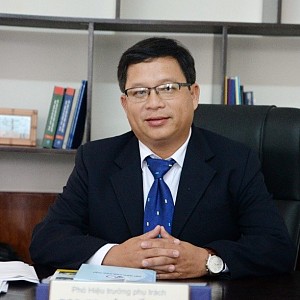
Assoc. Prof. Le Tuan Anh
Thu Dau Mot University
Thu Dau Mot University

PhD. Nguyen Quoc Cuong
Thu Dau Mot University
Thu Dau Mot University

PhD. Doan Ngoc Xuan
Thu Dau Mot University
Thu Dau Mot University

PhD. Nguyen Khoa Truong An
Thu Dau Mot University
Thu Dau Mot University
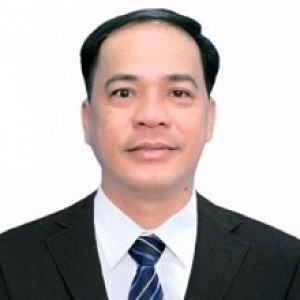
Assoc. Prof. Nguyen Thanh Binh
Thu Dau Mot University
Thu Dau Mot University
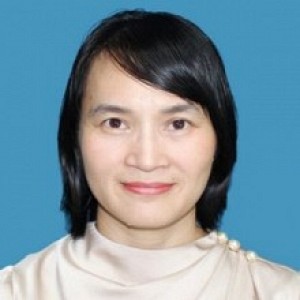
PhD. Le Thi Thuy Dung
Thu Dau Mot University
Thu Dau Mot University

PhD. Ngo Hong Diep
Thu Dau Mot University
Thu Dau Mot University
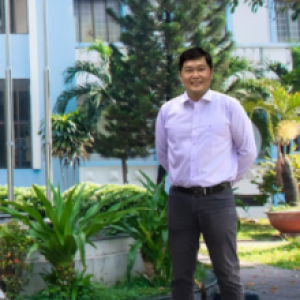
PhD. Nguyen Duc Dat Duc
Ho Chi Minh City University of Industry and Trade
Ho Chi Minh City University of Industry and Trade
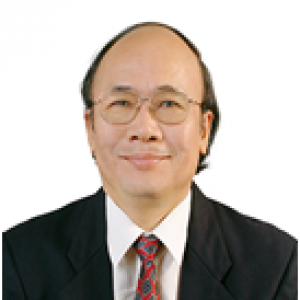
Assoc. Prof. Nguyen Van Duc
Animal Husbandry Association of Vietnam
Animal Husbandry Association of Vietnam

PhD. Nguyen Thi Nhat Hang
Department of Education and Training of Binh Duong Province
Department of Education and Training of Binh Duong Province

PhD. Nguyen Thi Cam Le
Vietnam Aviation Academy
Vietnam Aviation Academy

PhD. Trần Hạnh Minh Phương
Thu Dau Mot University
Thu Dau Mot University
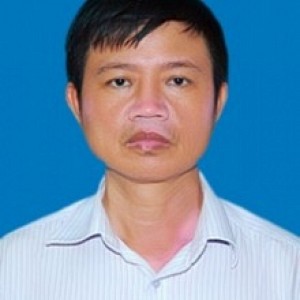
M.A. Pham Van Thinh
Thu Dau Mot University
Thu Dau Mot University

PhD. Nguyen Thi Lien Thuong
Thu Dau Mot University
Thu Dau Mot University
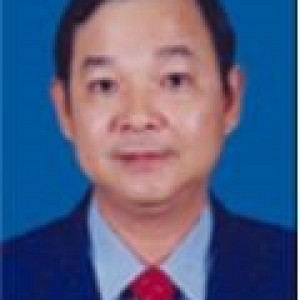
Prof. Le Quang Tri
Can Tho University
Can Tho University
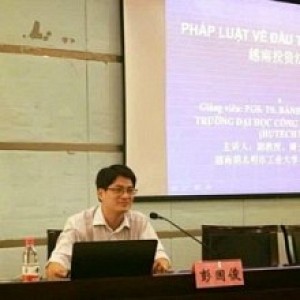
Prof. Banh Quoc Tuan
Thu Dau Mot University
Thu Dau Mot University

